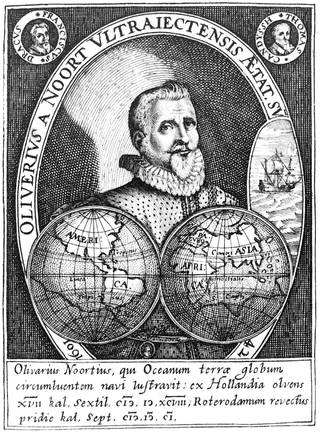
Corregidor is an island located at the entrance of Manila Bay in the southwestern part of Luzon in the Philippines, and is considered part of the Province of Cavite. Due to this location, Corregidor has historically been fortified with coastal artillery batteries to defend the entrance of Manila Bay and Manila itself from attacks by enemy warships. Located 48 kilometres (30 mi) inland, Manila is the nation's largest city and has been the most important seaport in the Philippines for centuries, from the colonial rule of Spain, Japan, and the United States, up through the establishment of the Third Philippine Republic in 1946.

Galleons were large, multi-decked sailing ships developed in Spain and first used as armed cargo carriers by Europeans from the 16th to 18th centuries during the age of sail and were the principal vessels drafted for use as warships until the Anglo-Dutch Wars of the mid-1600s. Galleons generally carried three or more masts with a lateen fore-and-aft rig on the rear masts, were carvel built with a prominent squared off raised stern, and used square-rigged sail plans on their fore-mast and main-masts.

Olivier van Noort was a Dutch merchant captain and pirate and the first Dutchman to circumnavigate the world.

Nasugbu, officially the Municipality of Nasugbu, is a 1st class municipality in the province of Batangas, Philippines. According to the 2020 census, it has a population of 136,524 people.

The Battle of Manila was fought during the Seven Years' War, from 24 September 1762 to 6 October 1762, between the Kingdom of Great Britain and the Kingdom of Spain in and around Manila, the capital of the Philippines, a Spanish colony at that time. The British won, leading to a twenty-month occupation of Manila.

Gómez Pérez Dasmariñas was a Spanish politician, diplomat, military officer and imperial official. He was the seventh governor-general of the Philippines from May or June 1, 1590 to October 25, 1593. Dasmariñas was a member of the Order of Santiago.
Franck Goddio is a French underwater archaeologist who, in 2000, discovered the city of Thonis-Heracleion 7 km off the Egyptian shore in Aboukir Bay. He led the excavation of the submerged site of Canopus and of Antirhodos in the ancient harbour of Alexandria. He has also excavated ships in the waters of the Philippines, significantly the Spanish galleon San Diego.

Francisco de Tello de Guzmán was Spanish governor of the Philippines from July 14, 1596 to May 1602. He was a knight of the Order of Santiago.

Pedro Bravo de Acuña was a Spanish military officer and colonial official in the New World and the Philippines. From 1602 to 1606 he was the eleventh governor of the Philippines.

Antonio de Morga Sánchez Garay was a Spanish soldier, lawyer and a high-ranking colonial official for 43 years, in the Philippines, New Spain and Peru, where he was president of the Real Audiencia for 20 years.

Orient was an Océan-class 118-gun ship of the line of the French Navy, famous for her role as flagship of the French fleet at the Battle of the Nile in August 1798, and for her spectacular destruction that day when her magazine exploded. The event was commemorated by numerous poems and paintings.
Diego Fajardo Chacón was a Spanish military officer and governor of the Philippines, from August 11, 1644 to July 25, 1653.

Heracleion, also known as Thonis and sometimes called Thonis-Heracleion, was an ancient Egyptian port city located near the Canopic Mouth of the Nile, about 32 km (20 mi) northeast of Alexandria on the Mediterranean Sea. It became inundated and its remains are located in Abu Qir Bay, currently 7 km (4.3 mi) off the coast, under ca. 19 ft (5.8 m) of water, and near Abukir. The sanctuary of Neith of Sais was located in Thonis. A stele found on the site indicates that late in its history the city was known by both its Egyptian and Greek names.

Spanish Formosa was a small colony of the Spanish Empire established in the northern tip of the island known to Europeans at the time as Formosa from 1626 to 1642. It was ceded to the Dutch Republic during the Eighty Years' War.

The Battles of La Naval de Manila or Battle of Manila Bay were a series of five naval battles fought in the waters of the Spanish East Indies in the year 1646, in which the forces of the Spanish Empire repelled various attempts by forces of the Dutch Republic to invade Manila, during the Eighty Years' War. The Spanish forces, which included many native volunteers, consisted of two, and later, three Manila galleons, a galley and four brigantines. They neutralized a Dutch fleet of nineteen warships, divided into three separate squadrons. Heavy damage was inflicted upon the Dutch squadrons by the Spanish forces, forcing the Dutch to abandon their invasion of the Philippines.

Fortune Island is a resort island of Batangas province in the Philippines. The 27-hectare (67-acre) island lies about 14 kilometers (8.7 mi) off the coast of Nasugbu in Batangas.
The Institut Européen d’archéologie Sous-Marine (IEASM) was founded in 1987 as a French non-profit organisation by President Franck Goddio. The organisation locates, explores, excavates and restores sunken sites. Further, the Instituto Europeo de Arqueologia Submarina was founded in April 2019 in Madrid, Spain.

Fuego Point, commonly known as Punta Fuego, is a flame-shaped headland located in western Batangas province on the island of Luzon in the Philippines. It extends as a 2.9 kilometres (1.8 mi) long promontory into the South China Sea overlooking Fortune Island and Nasugbu and Calayo bays in the municipality of Nasugbu. It is home to the exclusive Club Punta Fuego and Peninsula de Punta Fuego resort and seaside community.

Antirhodos was an island in the eastern harbor of Alexandria, Egypt, on which a Ptolemaic Egyptian palace was sited. The island was occupied until the reigns of Septimius Severus and Caracalla and it probably sank in the 4th century, when it succumbed to earthquakes and a tsunami following an earthquake in the eastern Mediterranean near Crete in the year 365. The site now lies underwater, near the seafront of modern Alexandria, at a depth of approximately five metres (16 ft).
The Battle of San Salvador (1642), also known as the Second Battle of San Salvador, was a military assault launched by the Dutch on a small fortified Spanish settlement and its aboriginal allies in northern Formosa 1642. After six days, the battle ended in defeat for the Spanish. The Spanish defeat secured complete island control for the Dutch.
















